Services
When constructing apartment buildings, hotels, commercial facilities and factories, shape design, selection of acoustic materials, and layout that consider noise and vibration are required. For concert halls, broadcast studios, and soundproof rooms, it is important to have an acoustic plan that maximizes sound insulation performance and sound quality. OTO provides total support, from measurement and analysis of noise/vibration, sound insulation performance, and room acoustics, to report creation, proposal of countermeasures, and consulting, which are necessary for the design and acoustic planning.
Noise
- Environmental Noise Measurement
- A-weighted Sound Pressure Level Measurement
- Low Frequency Sound Pressure Level Measurement
- Selection of Sound Insulation Performance of Windows and Vents
- Noise Distribution Prediction (Contour)
- Allophone Investigation (Cause Identification)
- Noise Regulation Law (Measurement and Prediction)
- Noise Monitoring
In factories that generate significant noise, it is necessary to comply with the noise level limits specified by laws and regulations. We can predict the "noise level" and "noise distribution" of equipment in operation at the proposed site, and provide responsible services such as planning of countermeasures, effectiveness of the countermeasures, and verification surveys after the countermeasures are implemented. Similarly, for environmental noise caused by automobiles, railroads, and aircrafts, we can provide "environmental noise measurement" and "noise monitoring" to measure, evaluate, and propose countermeasures to comply with the laws and regulations.
In apartment buildings and office buildings, floor impact sounds from upper floors, conversations from neighboring rooms, allophones of unknown origin, and low frequency sounds (*) leaking from equipment and machinery can cause problems. We have the ability to identify the causes of allphone and propose appropriate countermeasures, such as "abnormal sound investigation" and "low-frequency sound measurement".
* Sound waves that include low-frequency sounds of approximately 100 Hz or less and infrasound of 20 Hz or less are called low-frequency sounds.
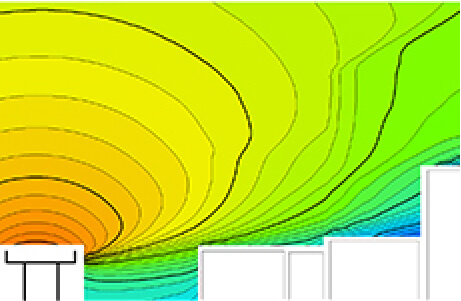
Noise Distribution from The Elevated Road
(Cross-section Contour)
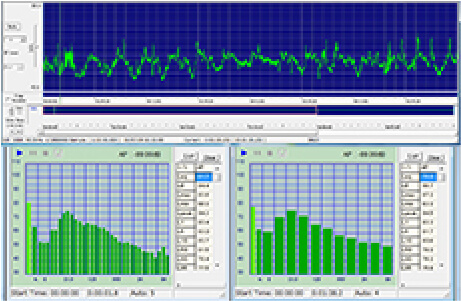
1/3 or 1/1 Octave Band
Frequency Analysis
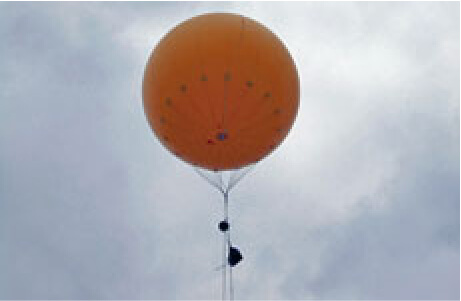
High-altitude Noise Measurement
(Balloon)
Vibration
When constructing concert halls, conference halls, broadcasting studios, detached houses, apartments buildings, hotels, etc. where quietness is required, it is necessary to consider environmental vibration such as vibration from railways and subways, vibration from main roads and elevated roads, and to design based on vibration countermeasures. We prevent various problems that may arise from vibration by using various measurement methods according to the purpose of the building at the planned site.
For example:
- Environmental Vibration Measurement: Measure the vibration of the surrounding environment
- Building Vibration Measurement: Measure the shaking of buildings when large vehicles pass by or when high-rise buildings sway with long periods of time during high winds
- Floor Slab Vibration Measurement: Measure vibration propagation characteristics by applying artificial shocks such as dropping a tire
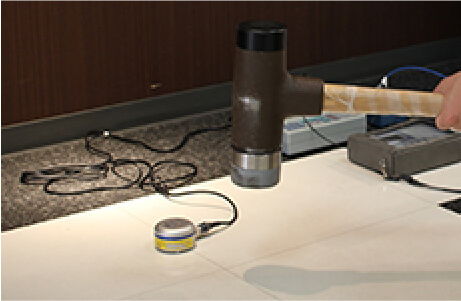
Impact Hammers
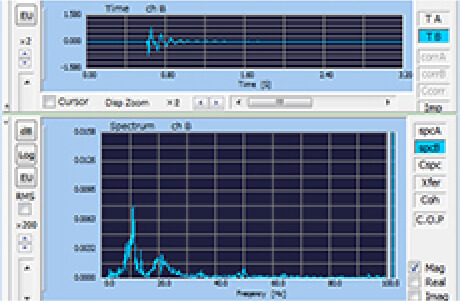
FFT Analyzer
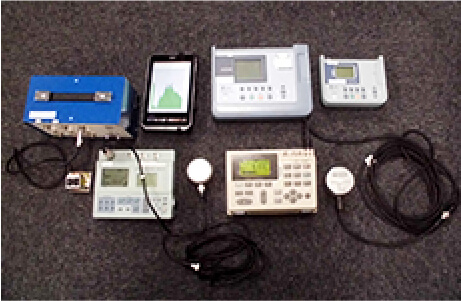
Vibration Measuring Equipments
- Environmental Vibration Measurement
- Vibration Level Measurement
- Vibration Acceleration Level Measurement (Audible Frequency Range)
- Vibration Frequency Characteristics (Octave, FFT)
- Building Vibration Characteristics (Microtremor, Human Power Method)
- Floor Slab Vibration Characteristics (Human Power Method)
- Vibration Regulation Law (Measurement and Prediction)
- Vibration Monitoring
Sound Insulation
Performance
- Floor Impact Sound Insulation Performance
(Floor Impact Sound Pressure Level) - Airborne Sound Insulation Performance
(Sound Pressure Level Difference) - Indoor Quietness Performance
(A-weighted Sound Pressure Level)
Sound insulation performance is required for airborne noise from adjacent rooms, floor impact noise from upper floors in apartments, hotels, soundproof rooms, multi-purpose rooms, halls, etc., and external noise from trains, airplanes, highways, and so on.
We involve in design and measurment related to sound insulation performance, such as selection of performance of windows and vents at the time of planning, prediction of floor impact noise, and performance inspection at the time of completion. We conduct sound insulation performance surveys during construction and at the time of completion, evaluate whether the design goals are met, and propose countermeasures for areas that are not met.
Specifically, we can handle various types of measurements elated to sound insulation performance.
For example:
- Floor impact sound insulation performance against the sound of dragging chairs on upper floors and children jumping and walking,
- Airborne sound insulation performance against the sound of neighbors' conversations and TVs,
- Indoor quietness performance to measure indoor noise against noise from trains, cars, and other external sources and equipment inside buildings.
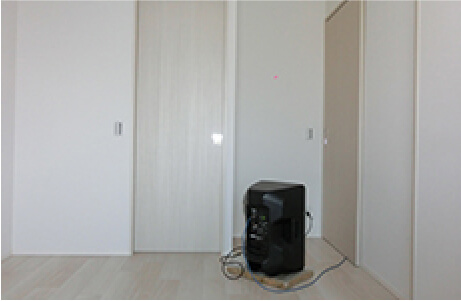
Airborne Sound Insulation Performance Measurement
(Sound Source Side)
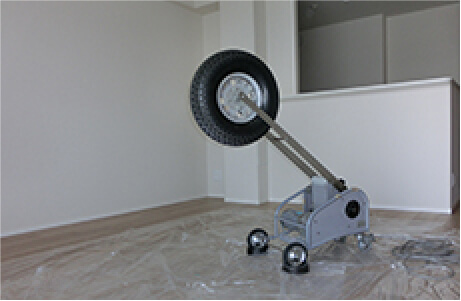
Heavy Floor Impact Sound Generator
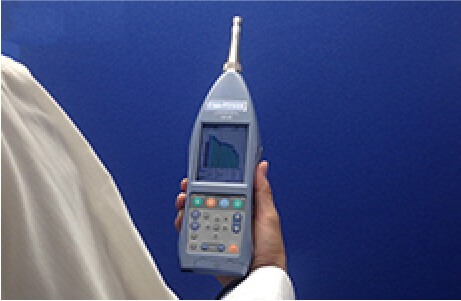
Sound Pressure Level Measurement
Room Acoustics
Sound quality and reverberation are extremely important in concert halls, broadcast studios, multipurpose rooms, and conference rooms. In order to realize an acoustic space that is suitable for the purpose of the facility, various numerical simulations are performed to calculate the acoustical parameters, which are used in designing the shape and interior materials.
It has been recognized in recent years that the delay time and direction of arrival of "reflected sound" and the intensity of sound are key factors that determine the sound quality in a room. As a method to determine the arrival time and direction of this reflected sound, we perform simulations using a back-trace method based on "geometric acoustics," which geometrically captures the propagation and diffusion of sound energy. We can calculate reverberation time, echo time pattern, sound ray diagram, directional diffusivity, etc., and can provide consulting services for a wide range of applications.

Omnidirectional Speaker

Echo Time Pattern Measurement
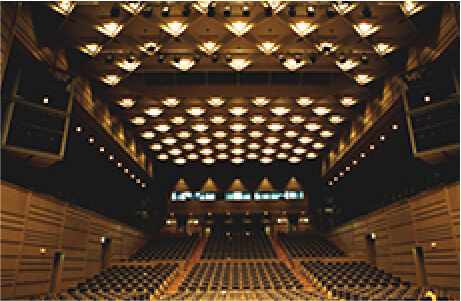
Ritto Arts and Culture Center
(Based on measurement results)
- Reverberation Time
- Echo Time Pattern
- Acoustical Parameters (D-value, C -value, LE-value, STI)
- Rub&Buzz Test
- Room Acoustic Design
Abnormal Sound
- Noise Measurement
- Structure-borne Sound Measurement
Creaking sounds that you hear inside a building can be unpleasant for unknown reasons. We measure and investigate the sources of such sounds. Abnormal sounds are caused by natural conditions such as wind and rain, expansion and contraction of building materials due to heat, vibration of equipment in the building, and vibration of electric equipment in a separate room. In addition, vibrations generated inside and outside the building are transmitted through the structure of the building, and the sound radiated from vibrating elements such as walls, floors, and ceilings is called "structure-borne sound," which often causes complaints and troubles.
These are not resolved by attempting to take countermeasures without knowing the cause of the problem. For sounds which occurrence and timing are unknown, we can identify the source of the sound based on the time, location, frequency, and other trends of unexplained sound occurrence through a one-day to one-week monitoring measurement (*occupant cooperation may be required), and propose appropriate countermeasures such as vibration isolation and changes in finishing materials.

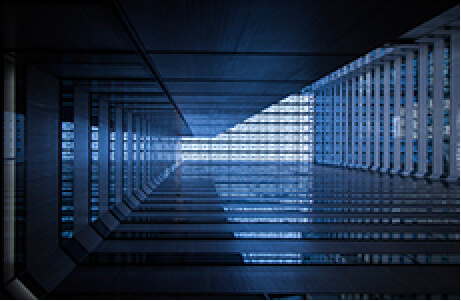
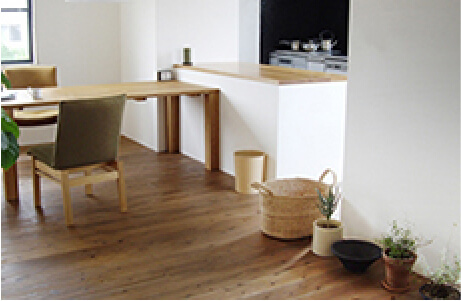
Others
We are commissioned by construction companies and university laboratories to measure and analyze experiments related to sound and vibration. For example, when a building component such as a louver is exposed to wind under certain conditions, it may generate sound. In the design stage, we conducts experiments in a wind tunnel testing room (at another company's facility) to measure the sound generated by the material under various conditions of wind exposure.
Other examples include experiments to investigate vibration characteristics by applying vibrations to actual buildings with shakers or human power, and sound experiments in anechoic and reverberation rooms (at other companies' facilities).
In recent years, there are an increasing in number of factories that perform microfabrication that can cause problems due to microvibration. We have created an original measurement system that performs real-time frequency analysis of sound and vibration, constantly monitors over a long period of time, and notifies when sound or vibration exceeds a set value. If you have any problems with sound or vibration, please feel free to contact us.

Vibration exciter/shaker
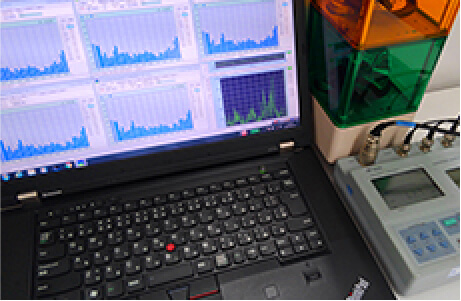
Vibration monitor

Wind tunnel experiment in reverberation chamber
Sasakura Co., Ltd. Acoustic Laboratory
- Experiment (Measurement, Analysis, etc.)
- Continuous Monitoring System for Sound and Vibration

